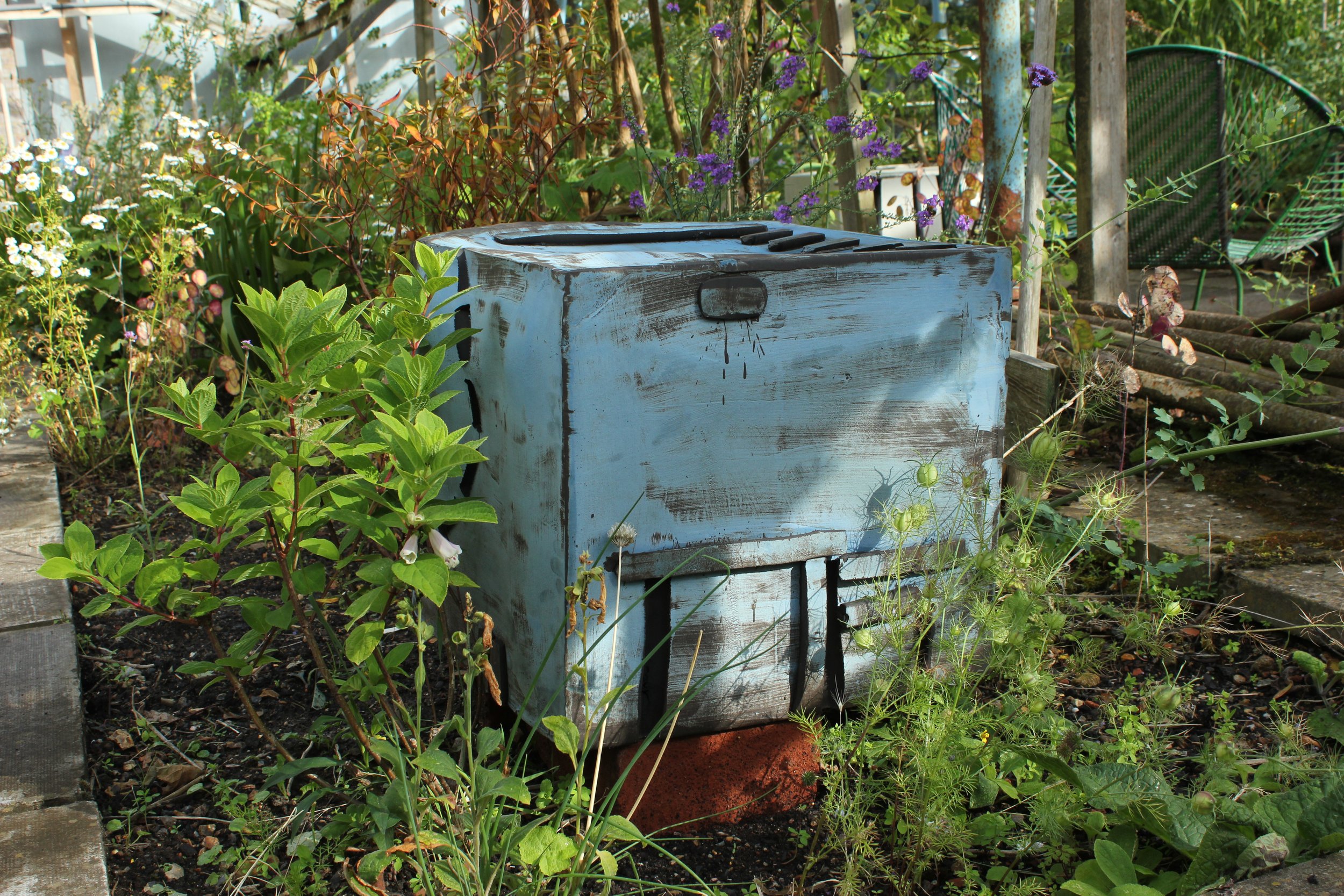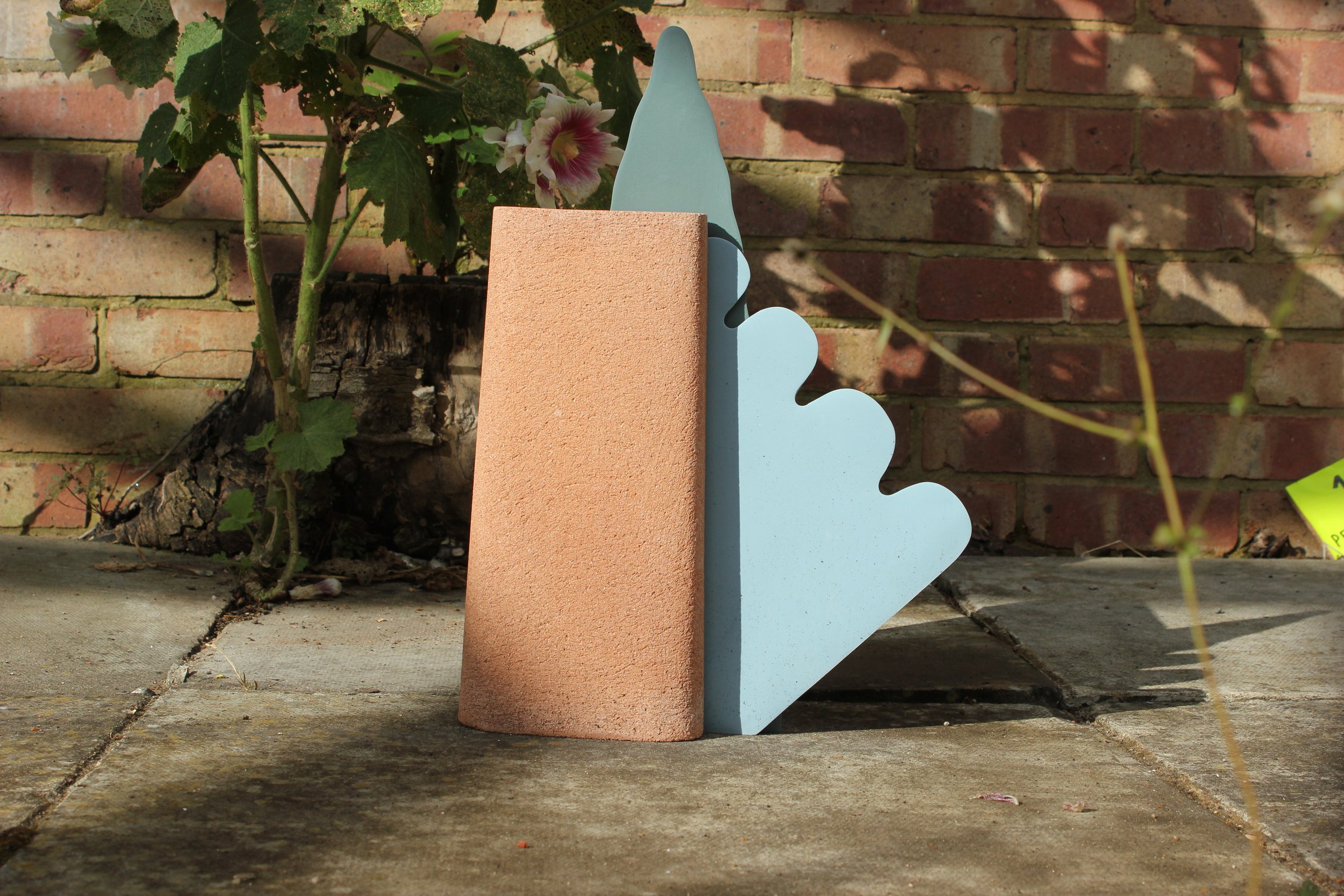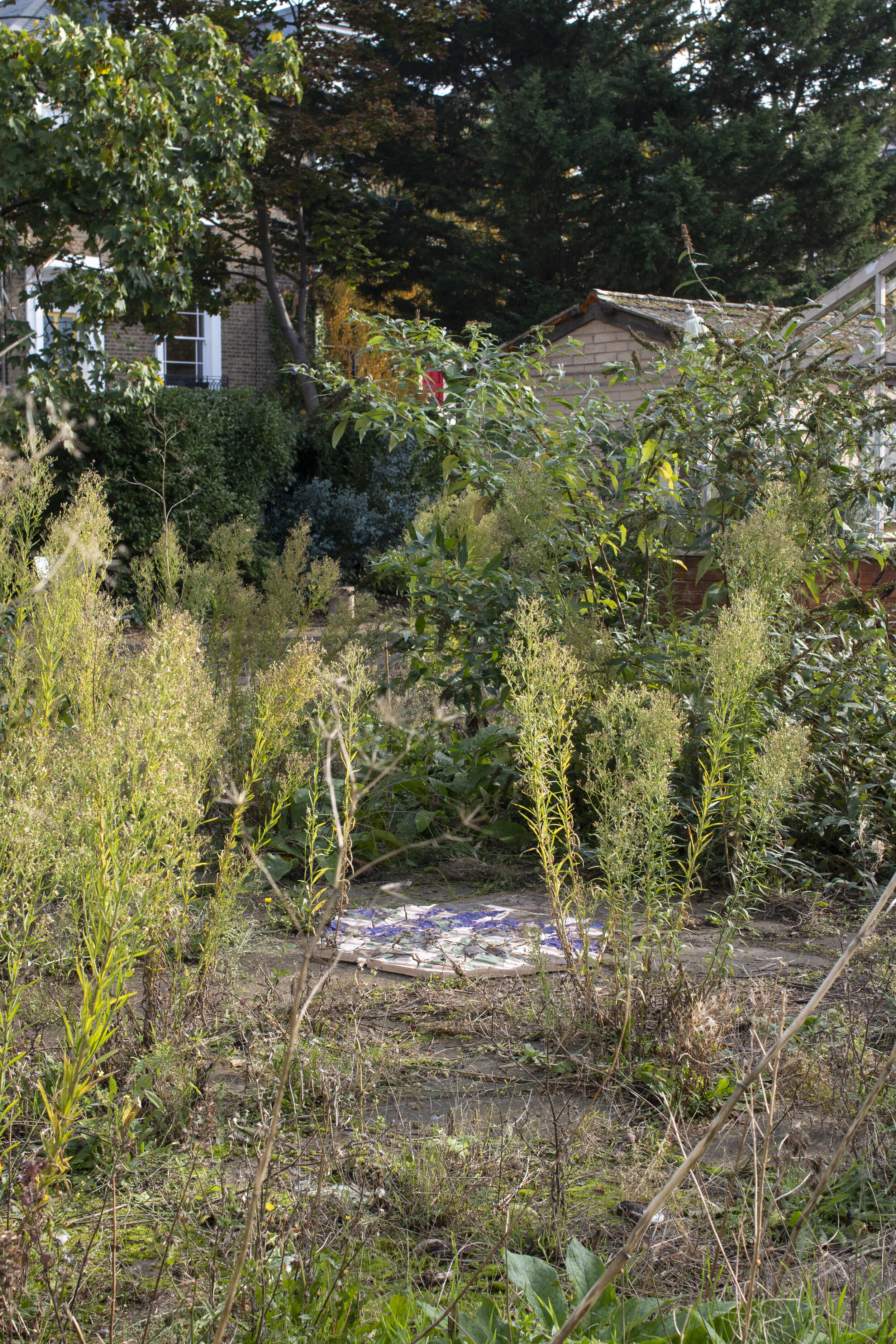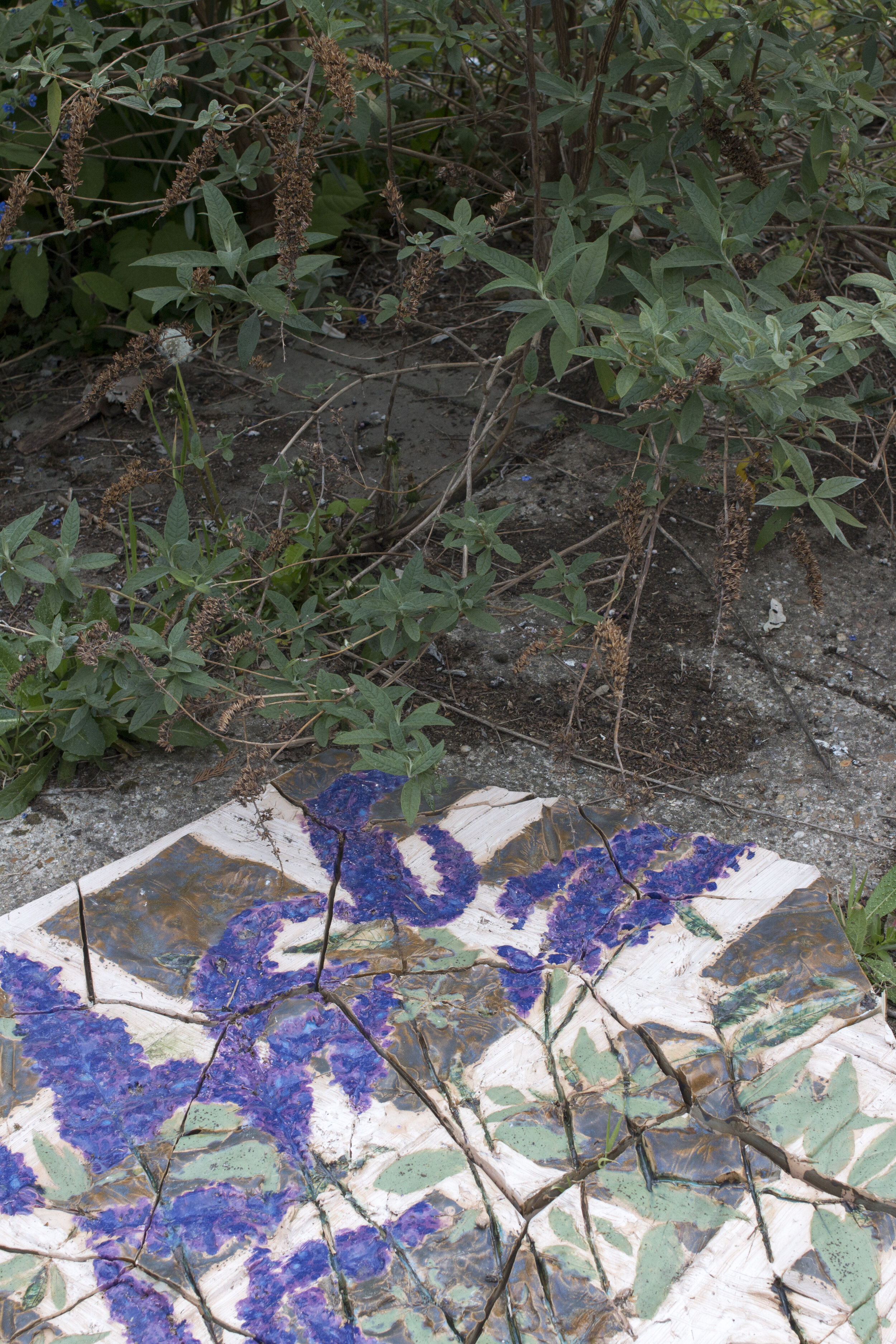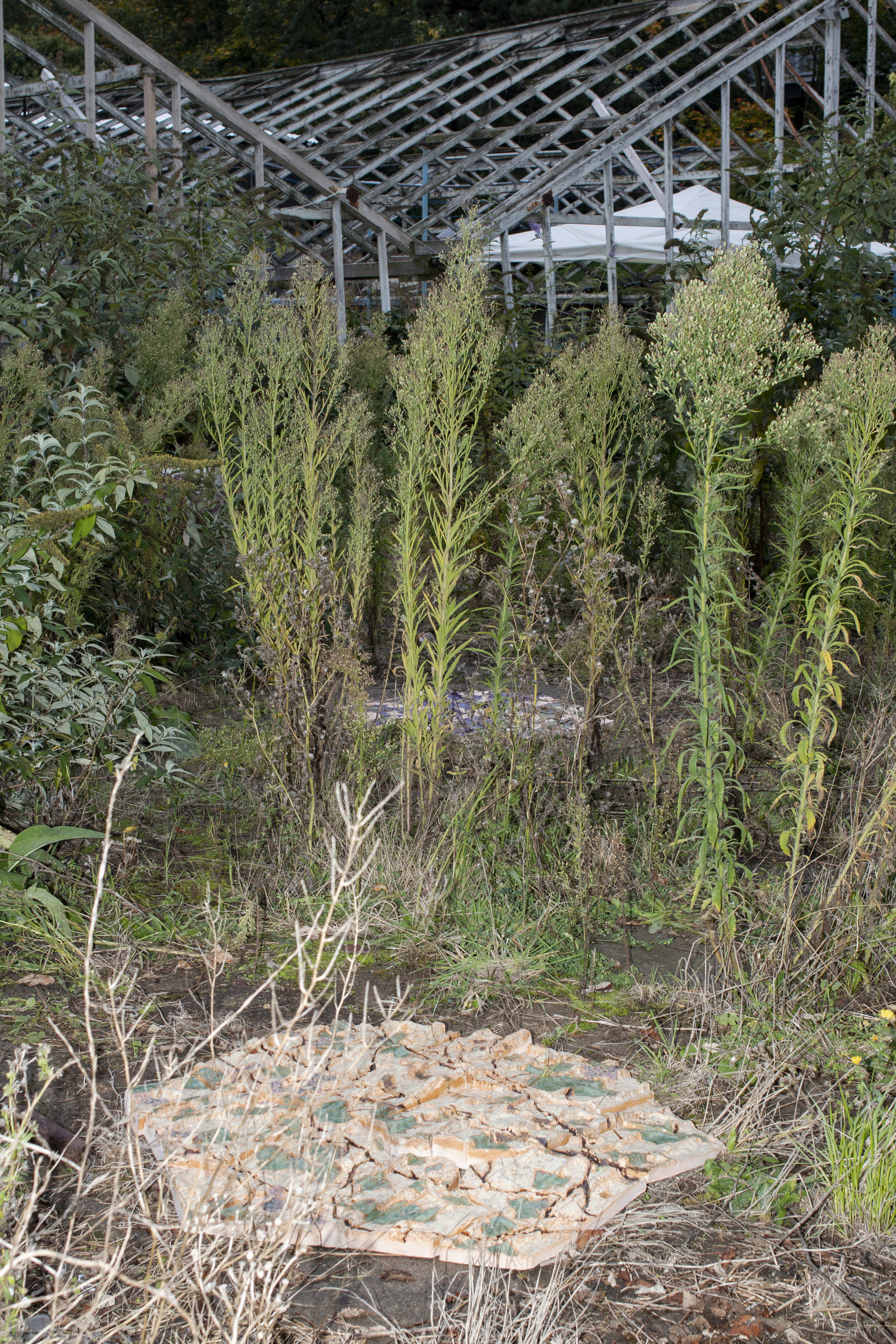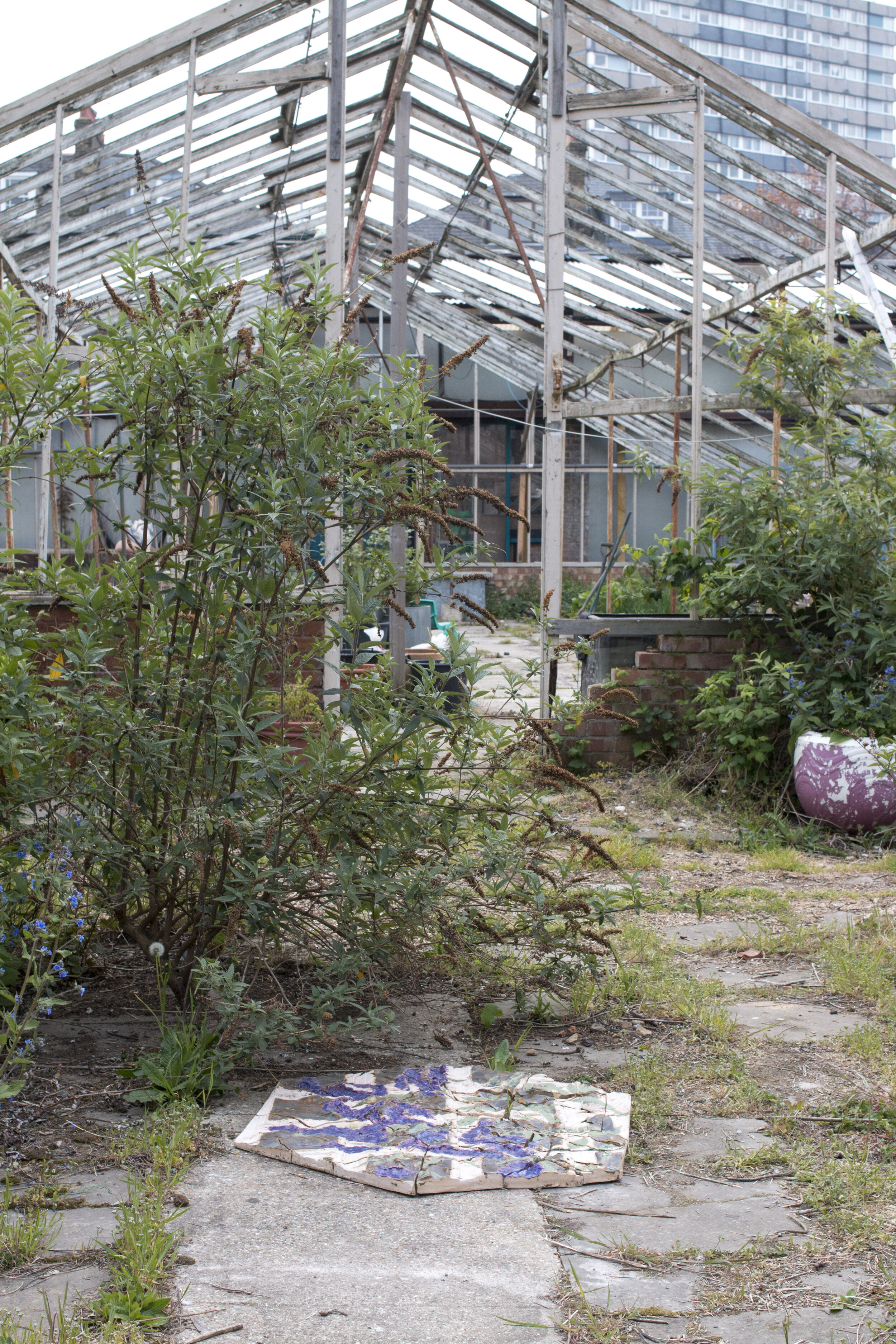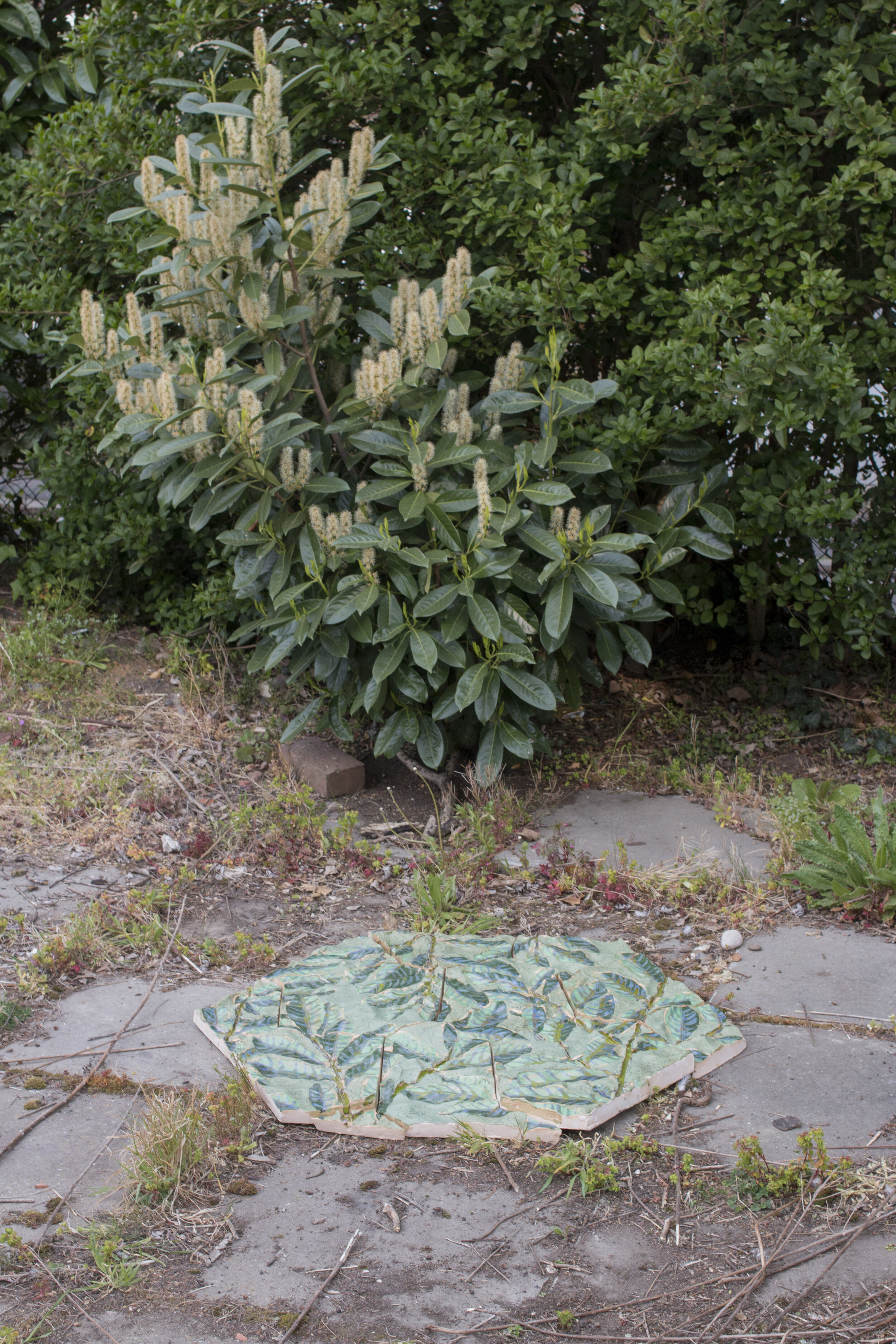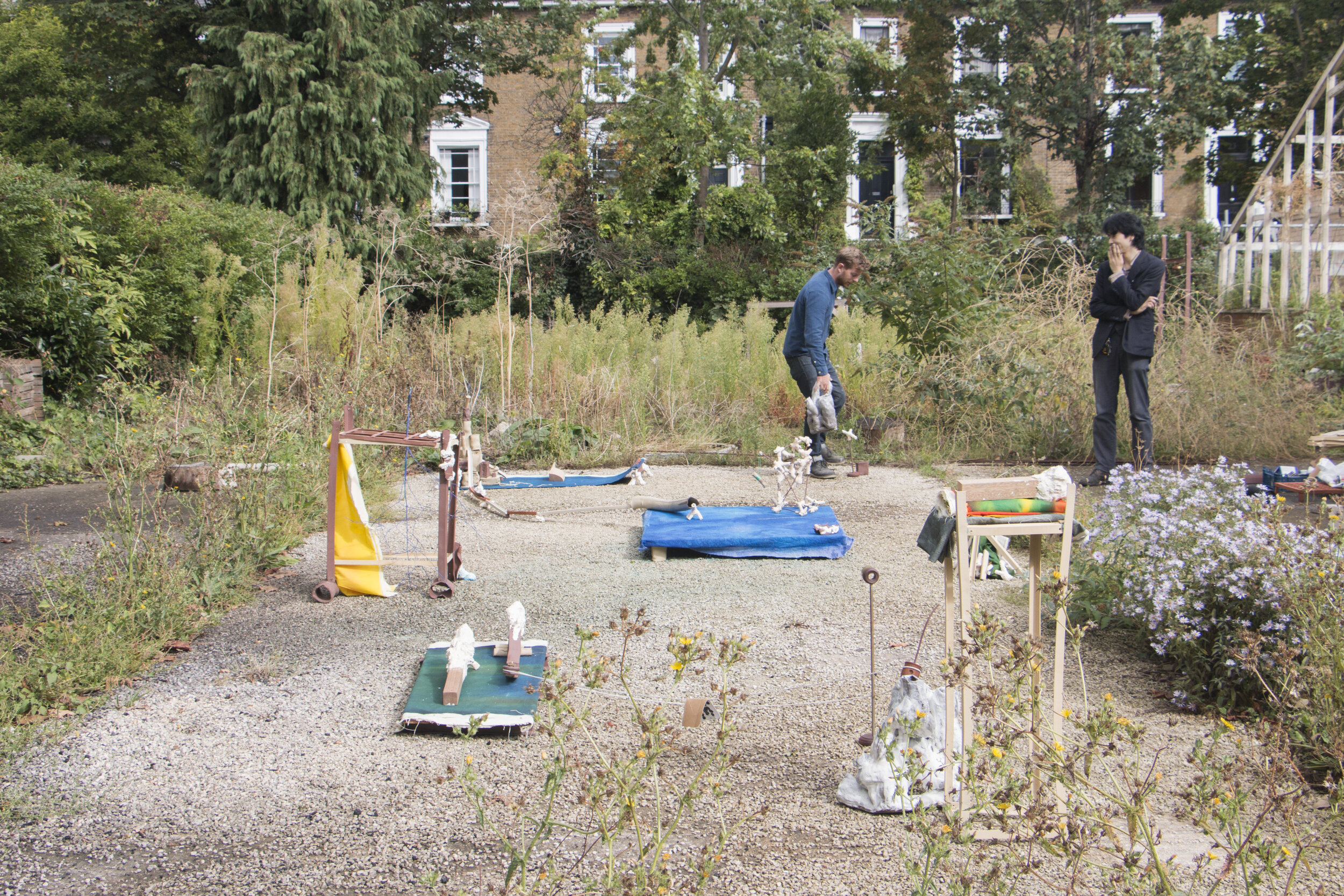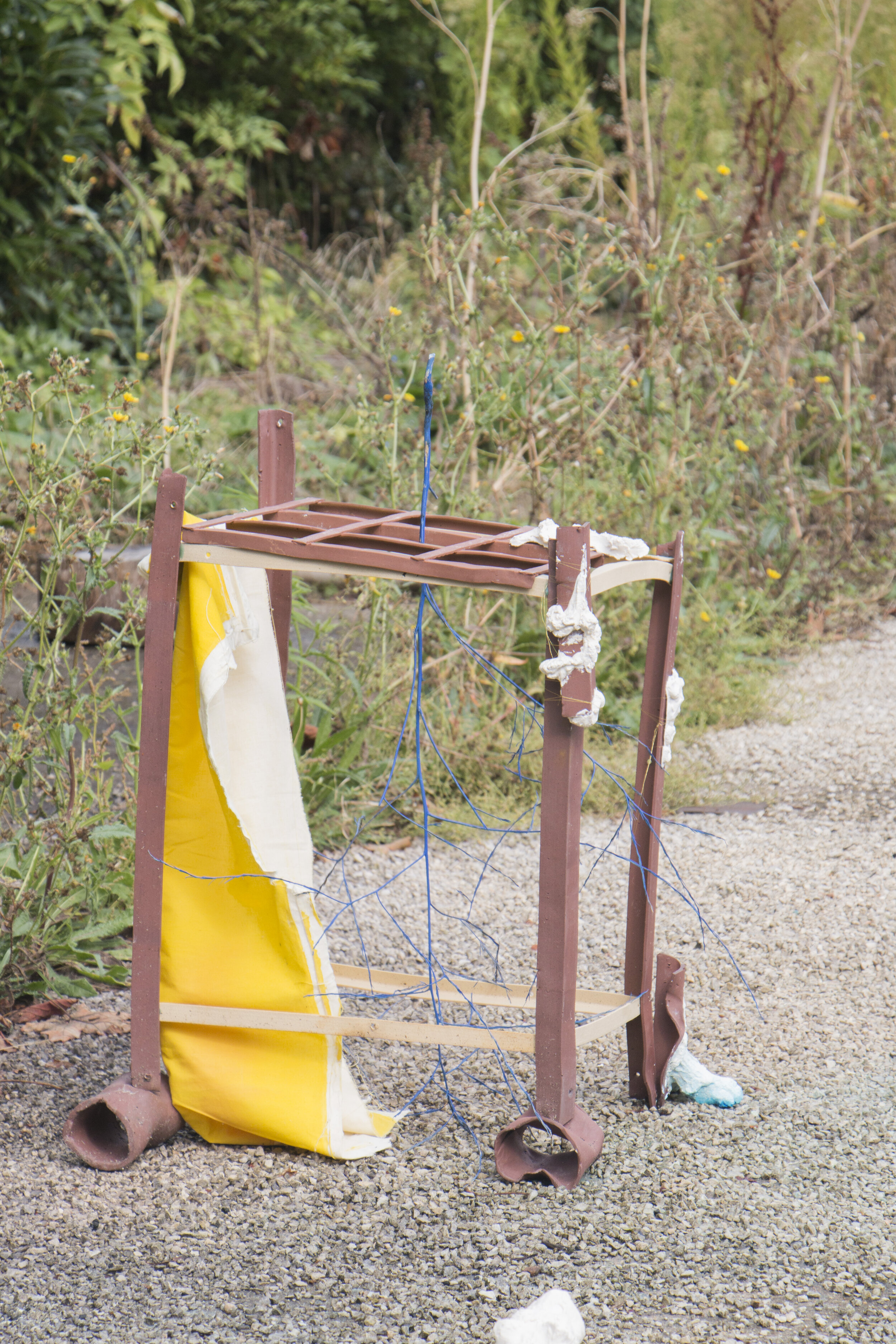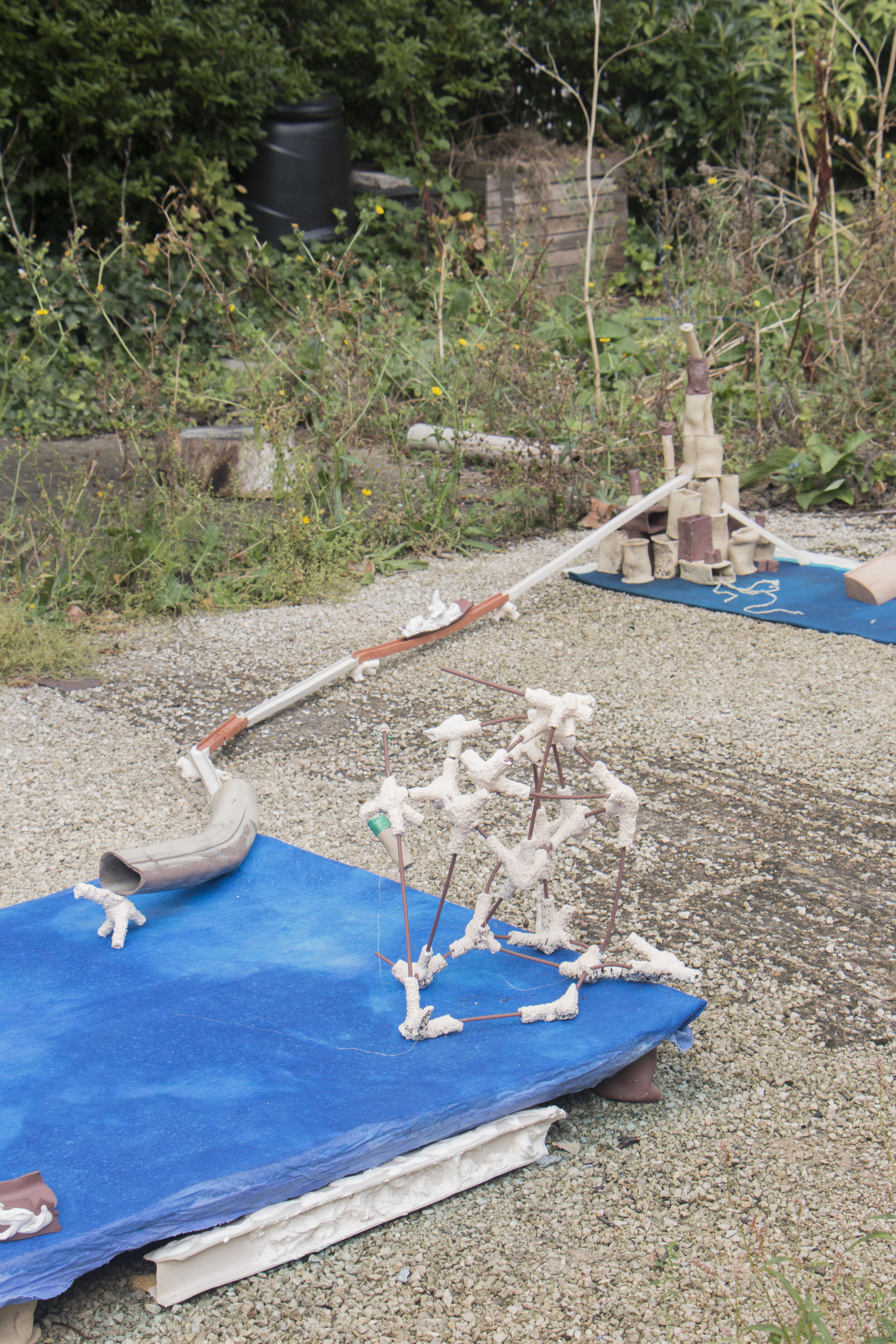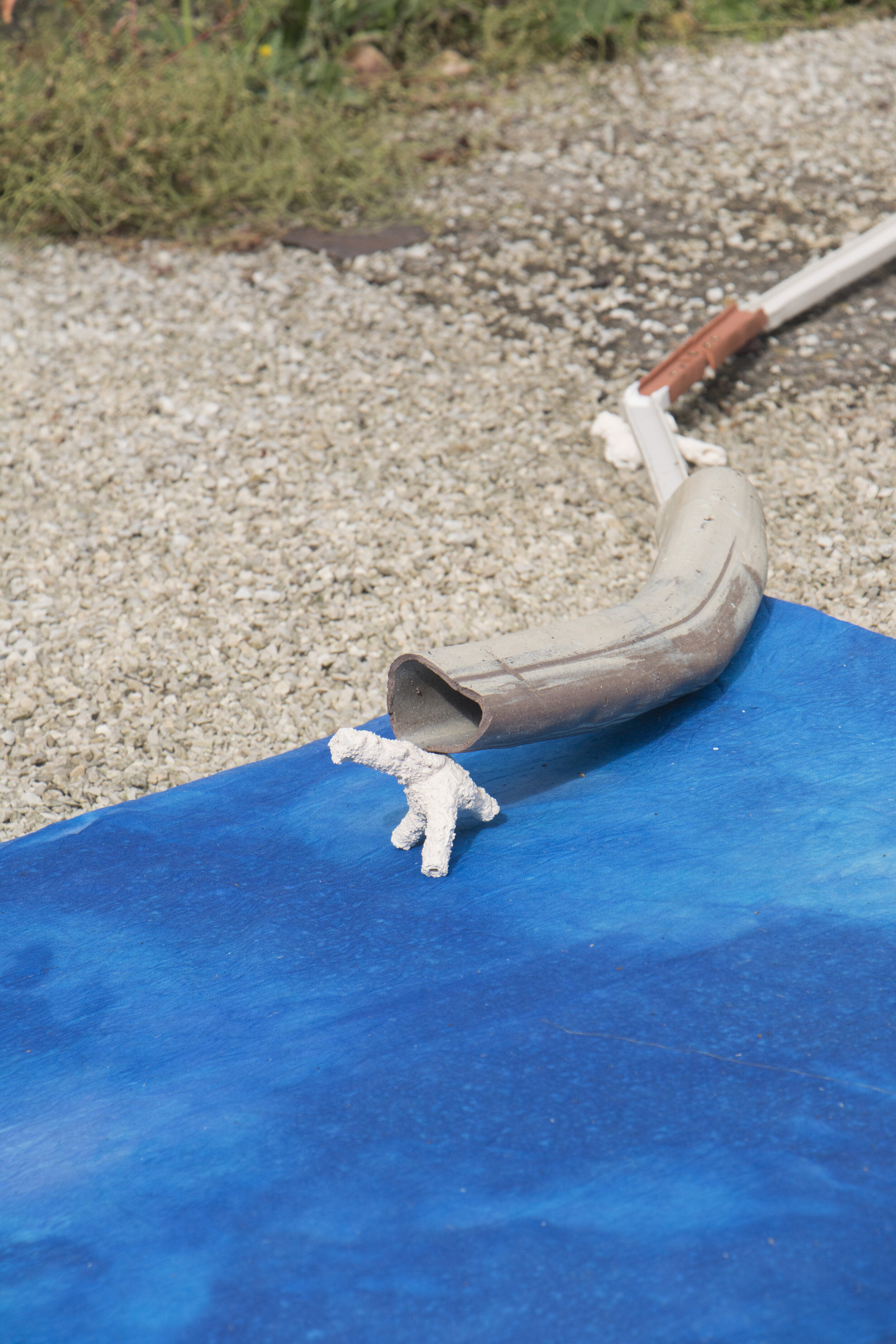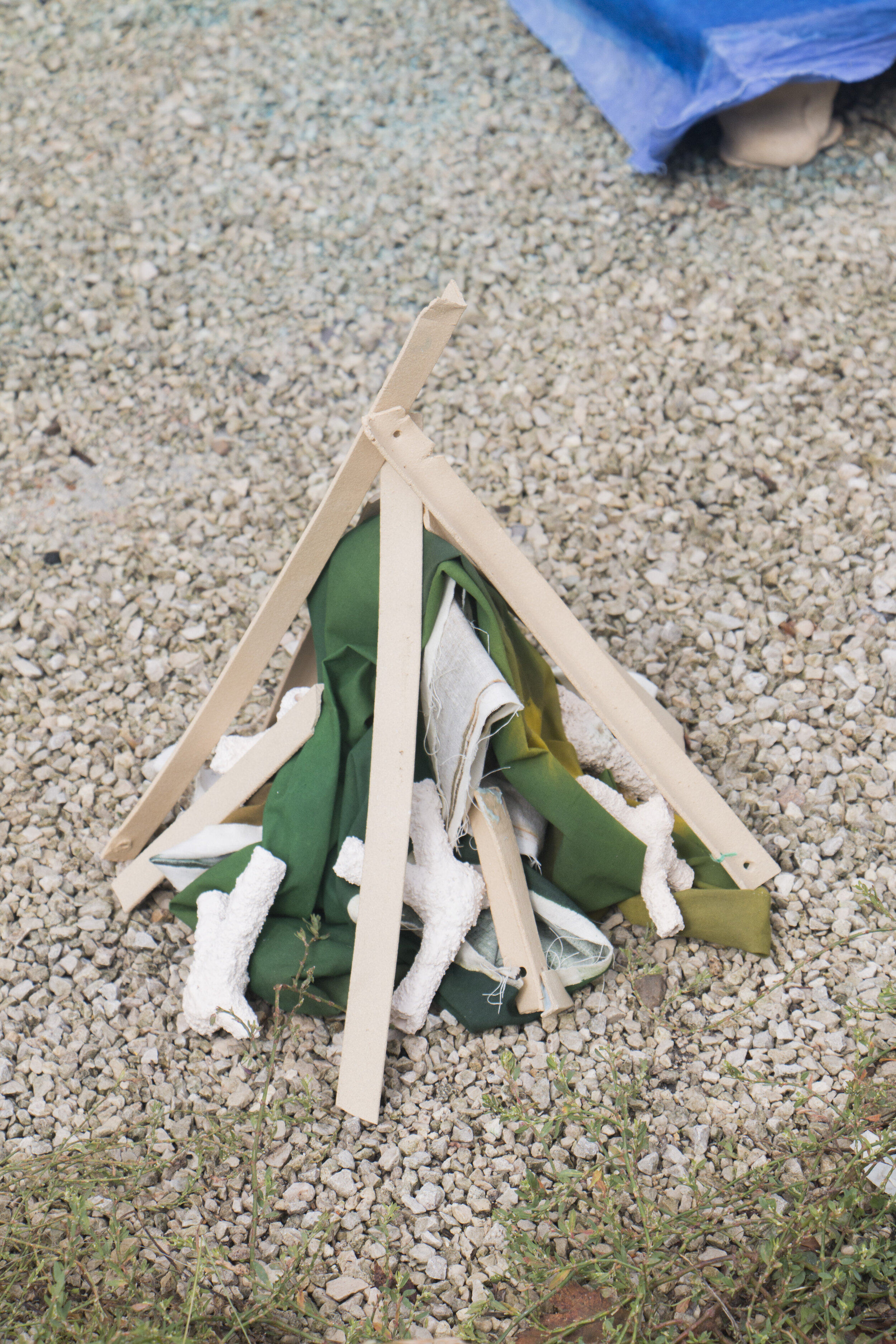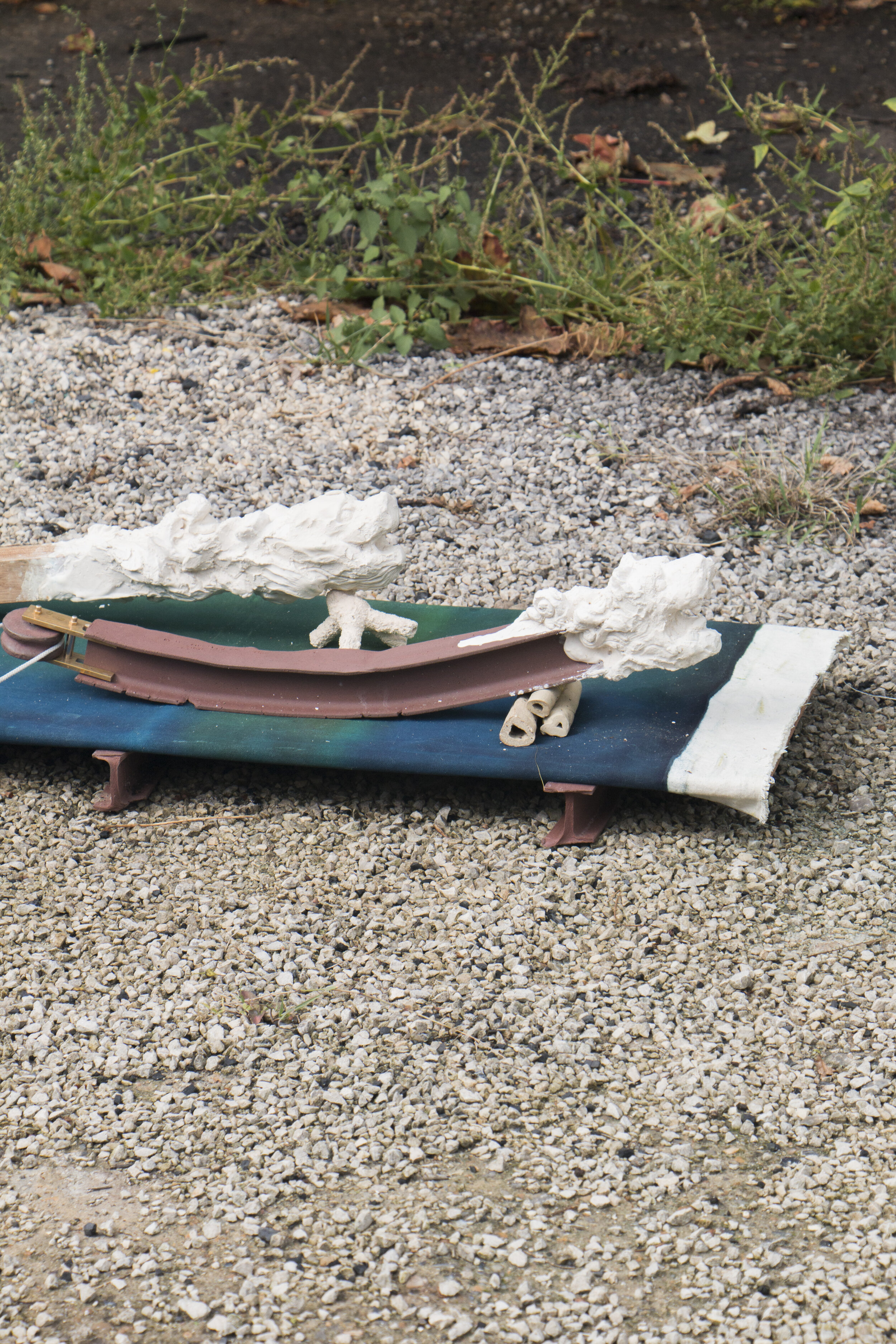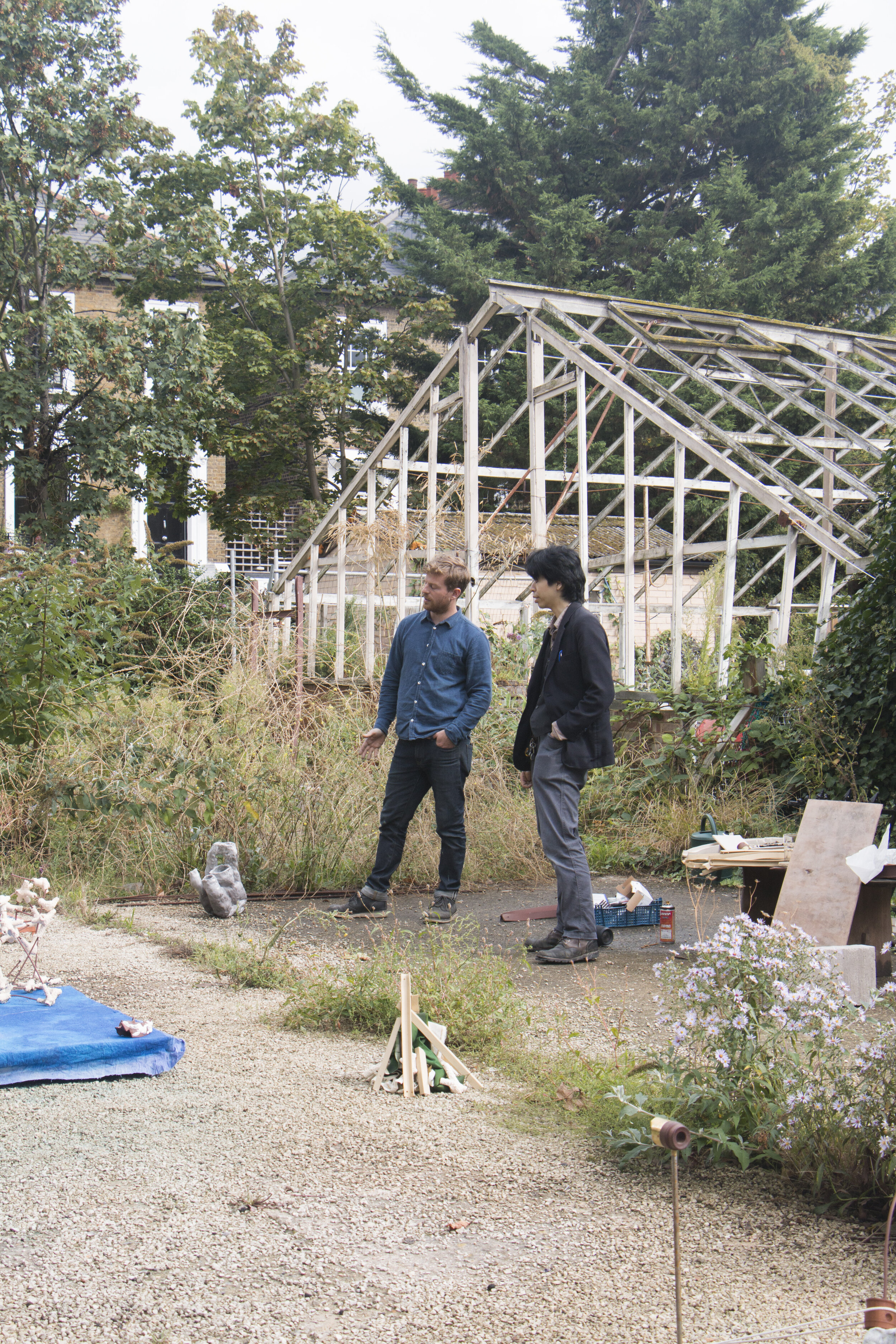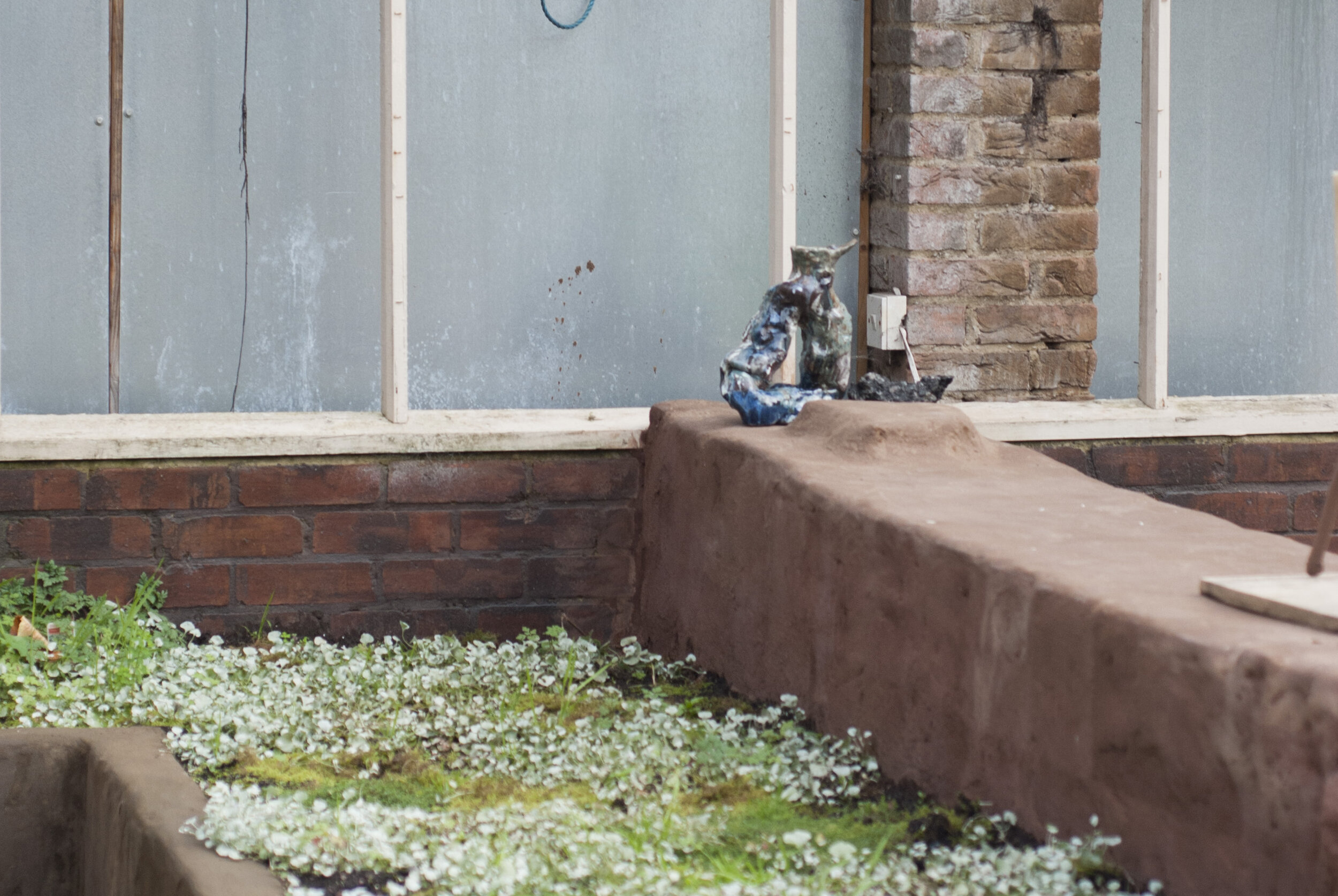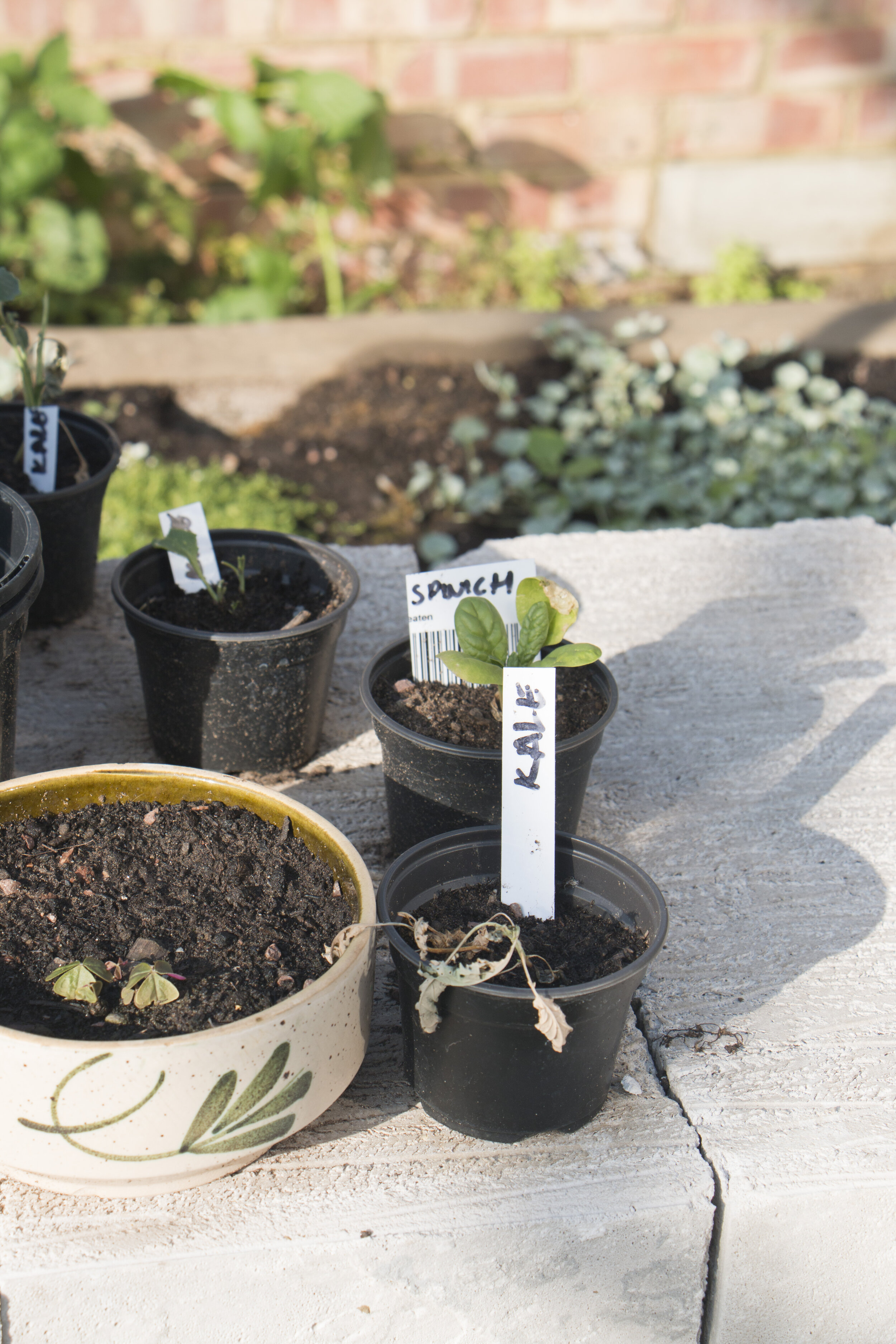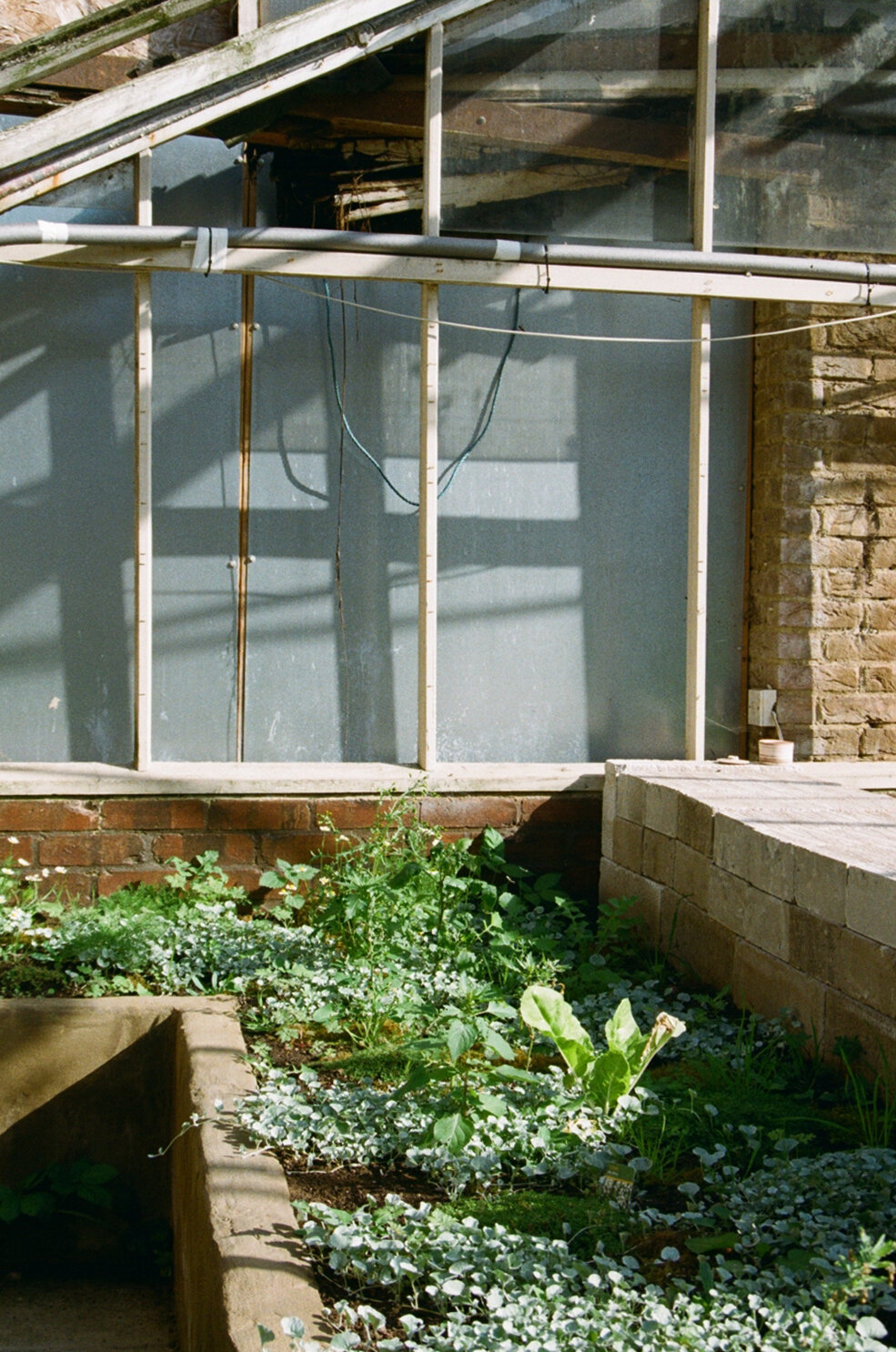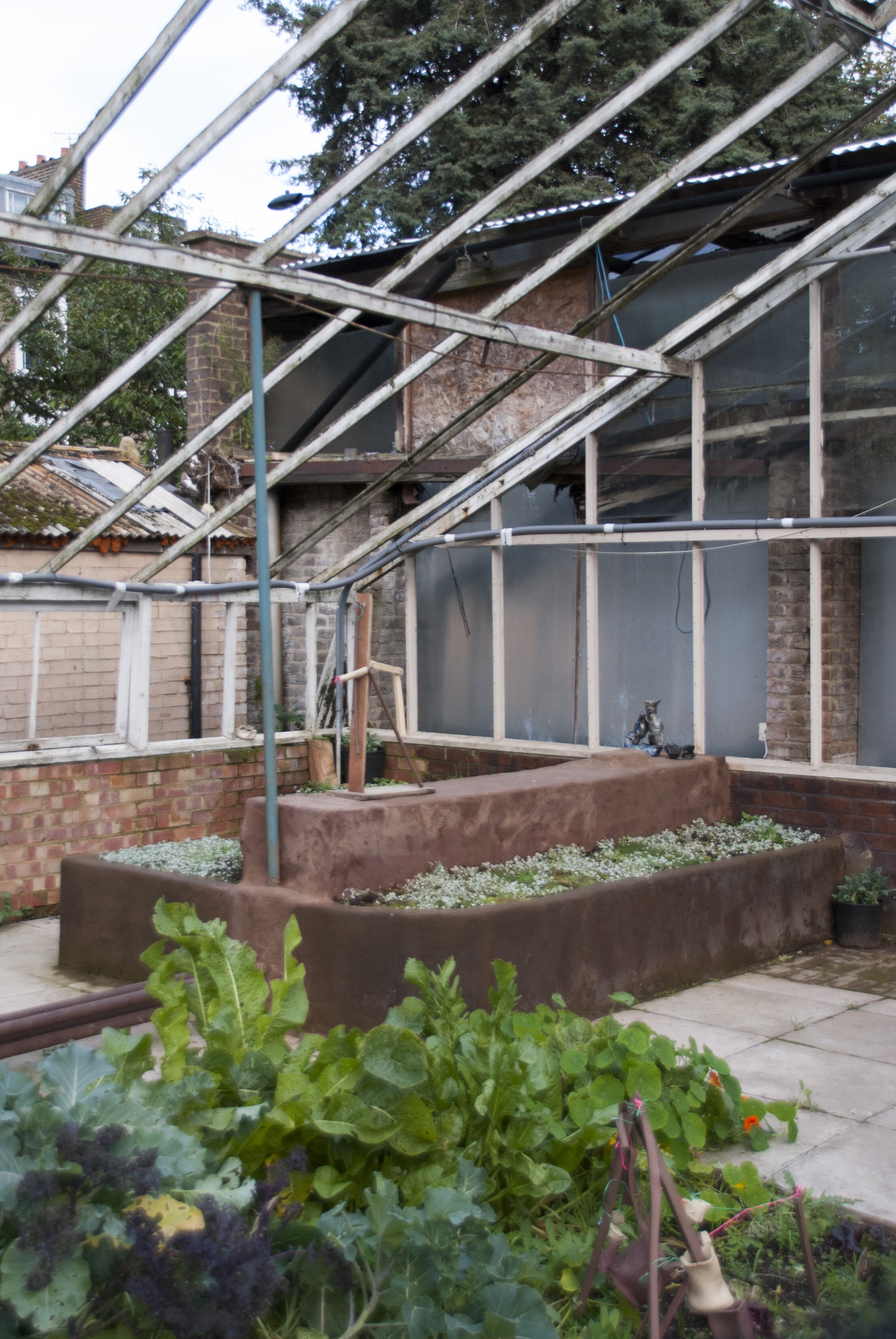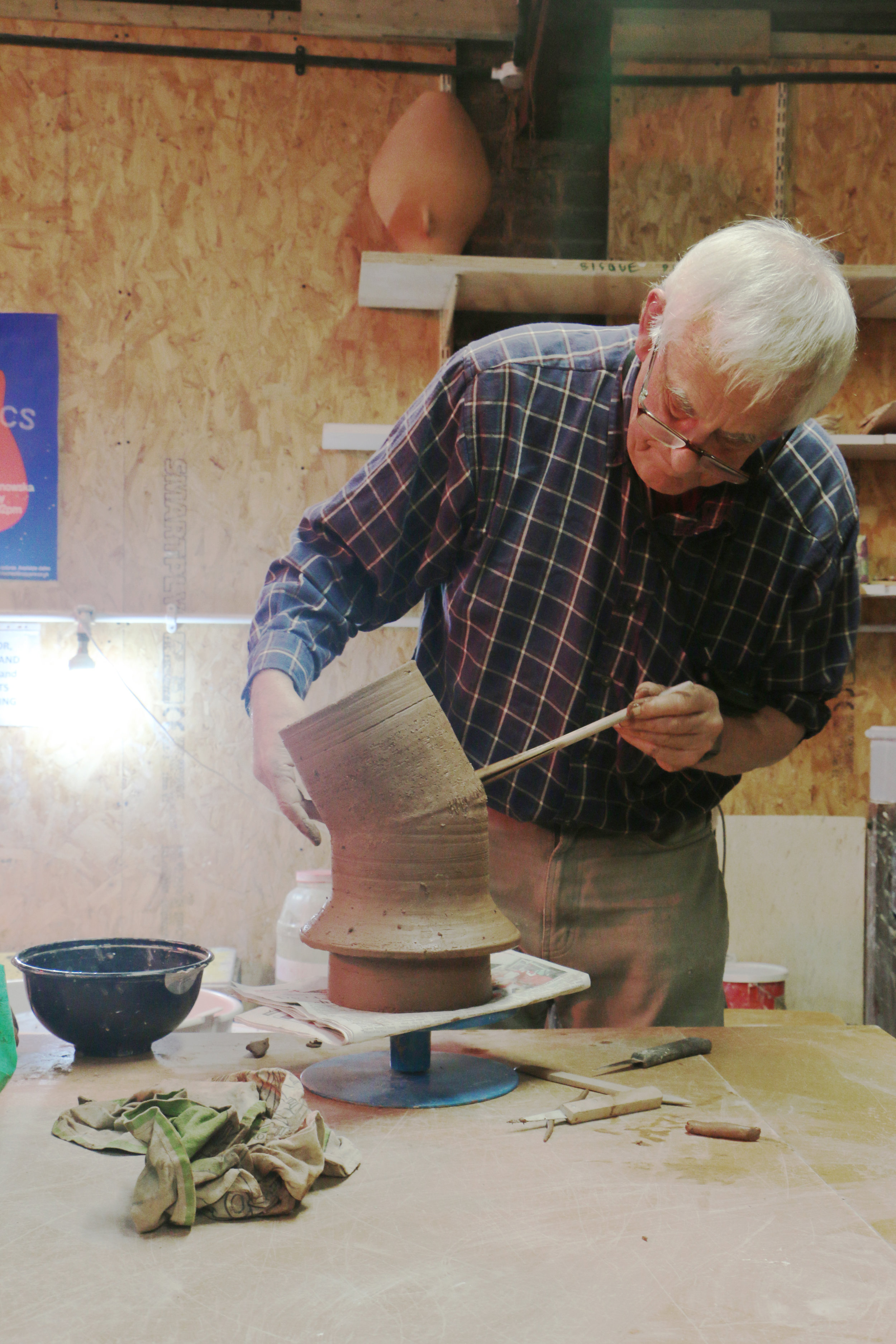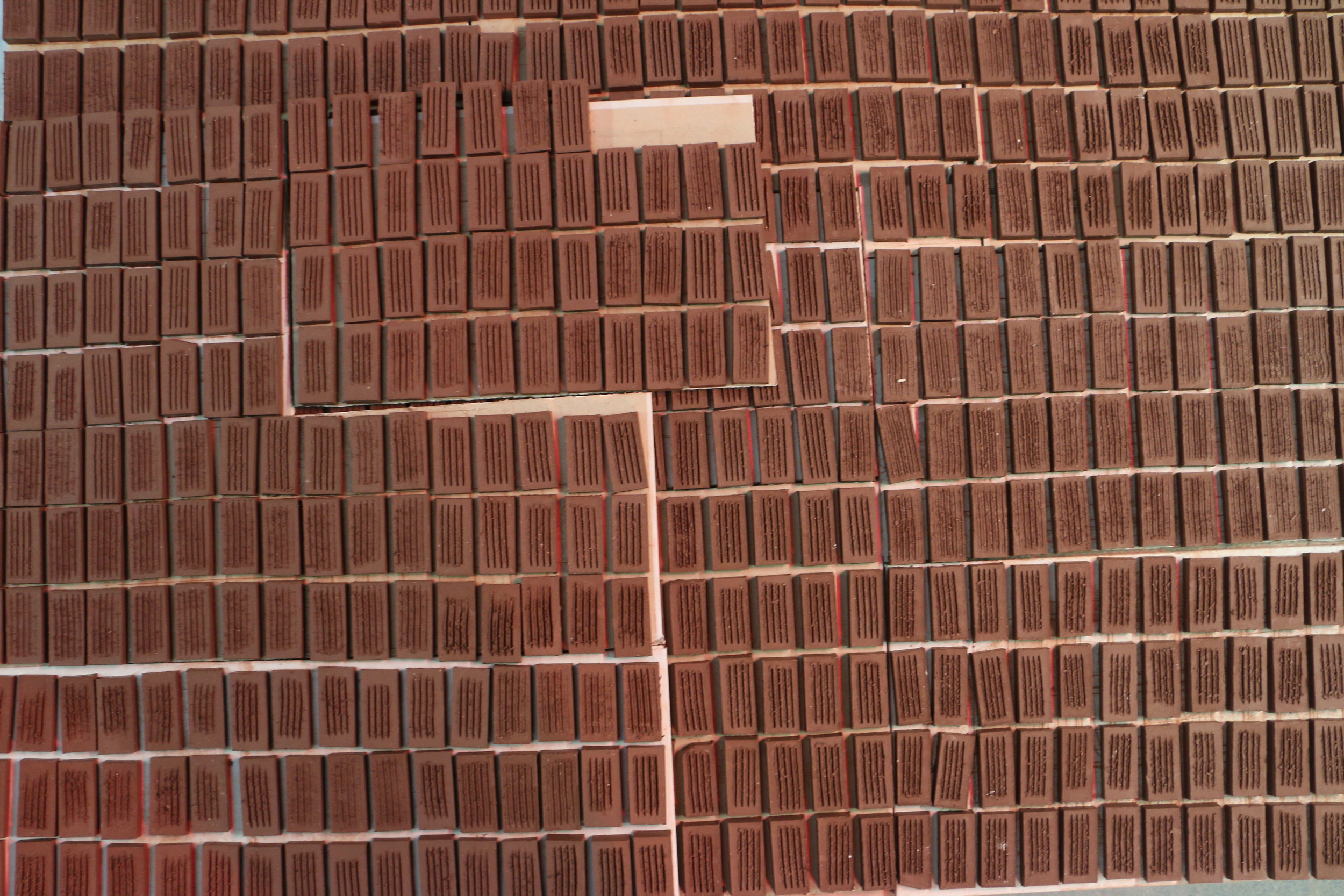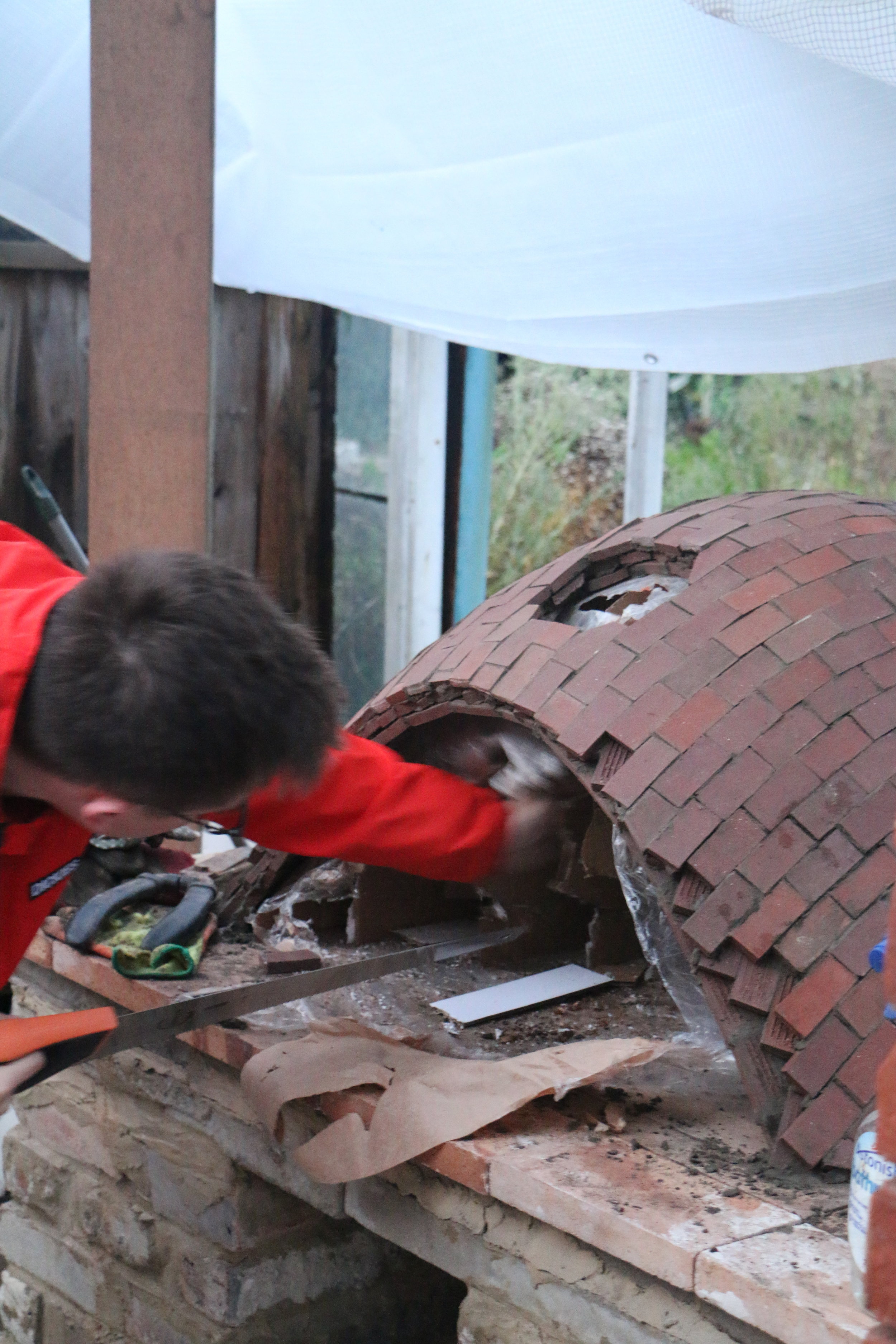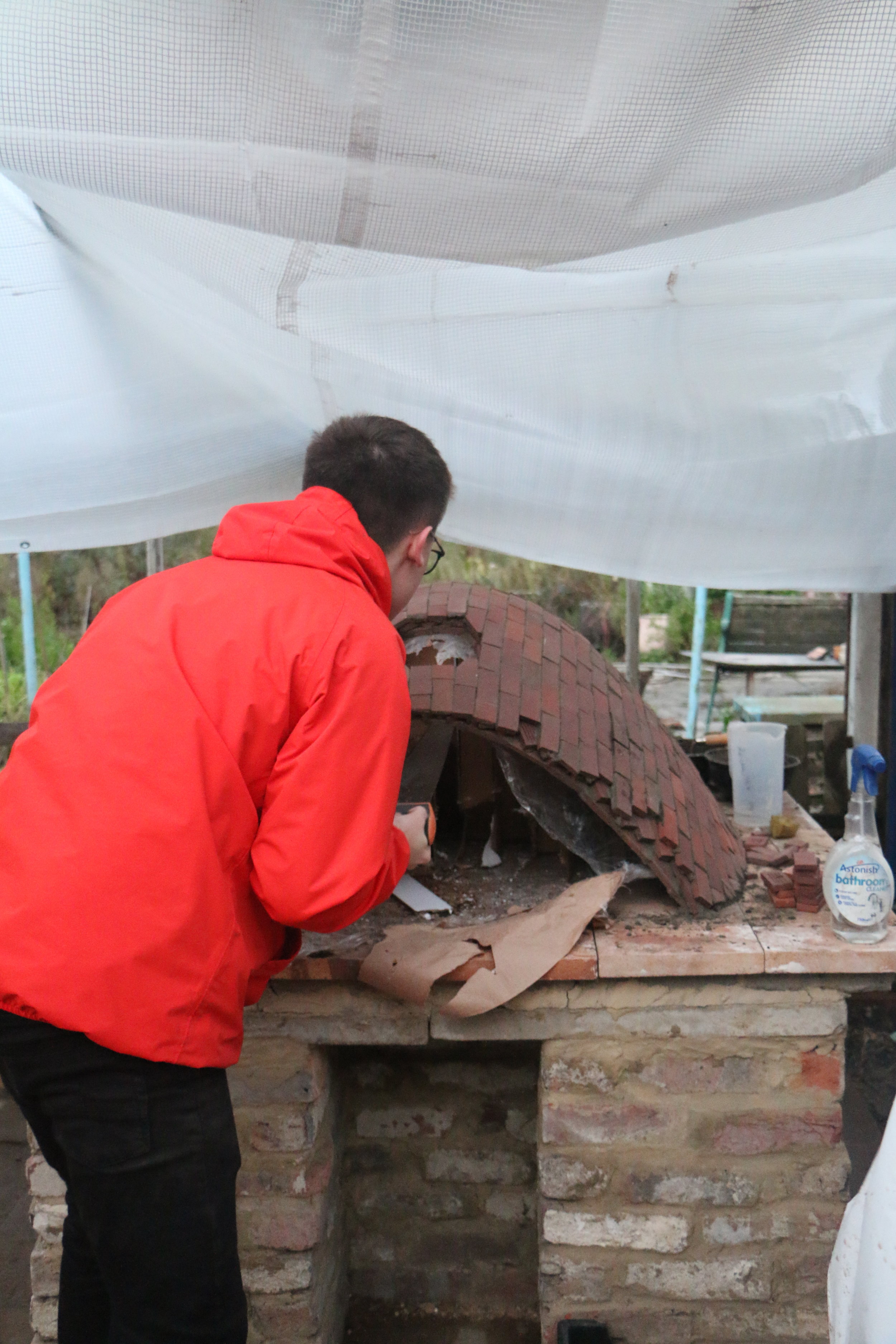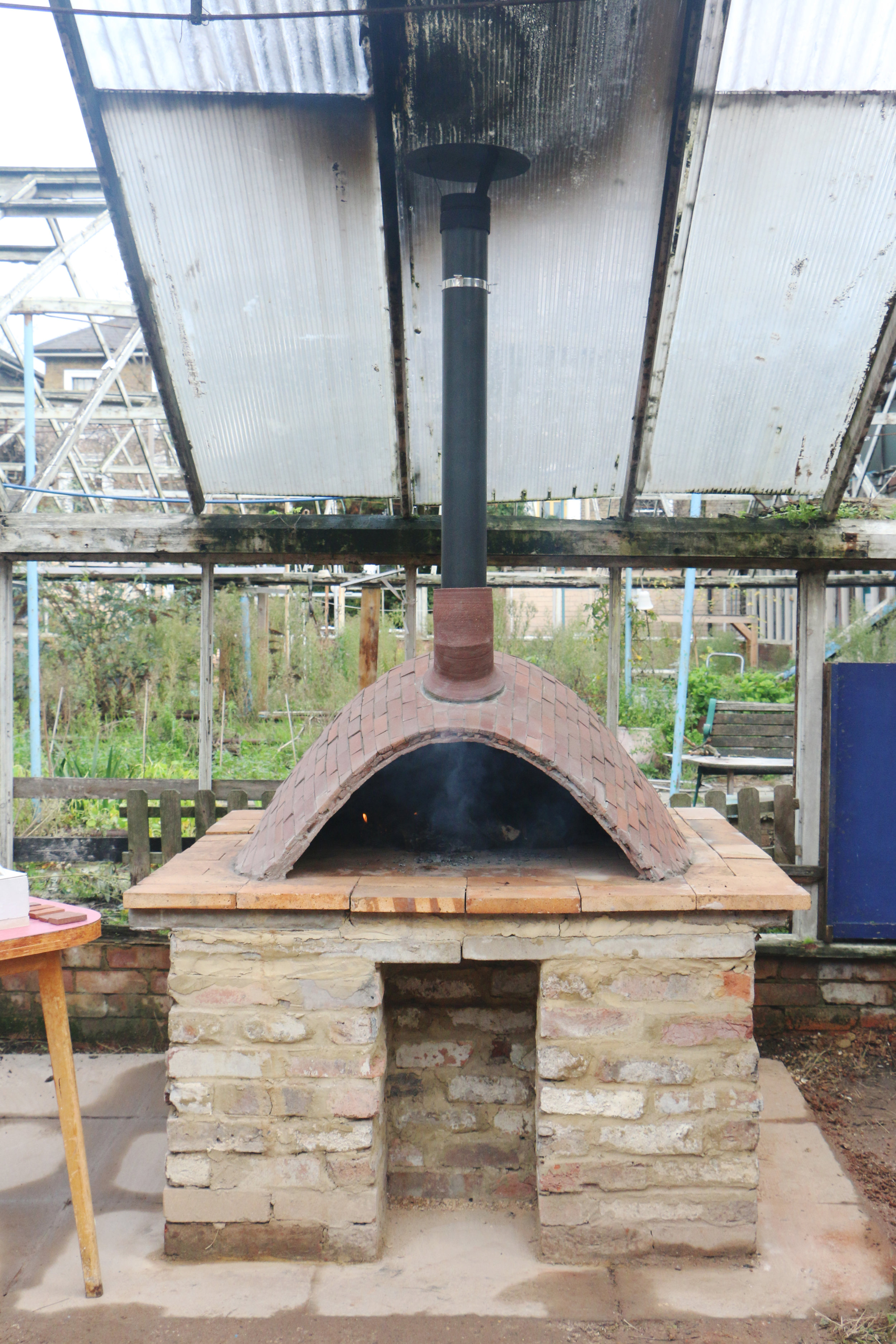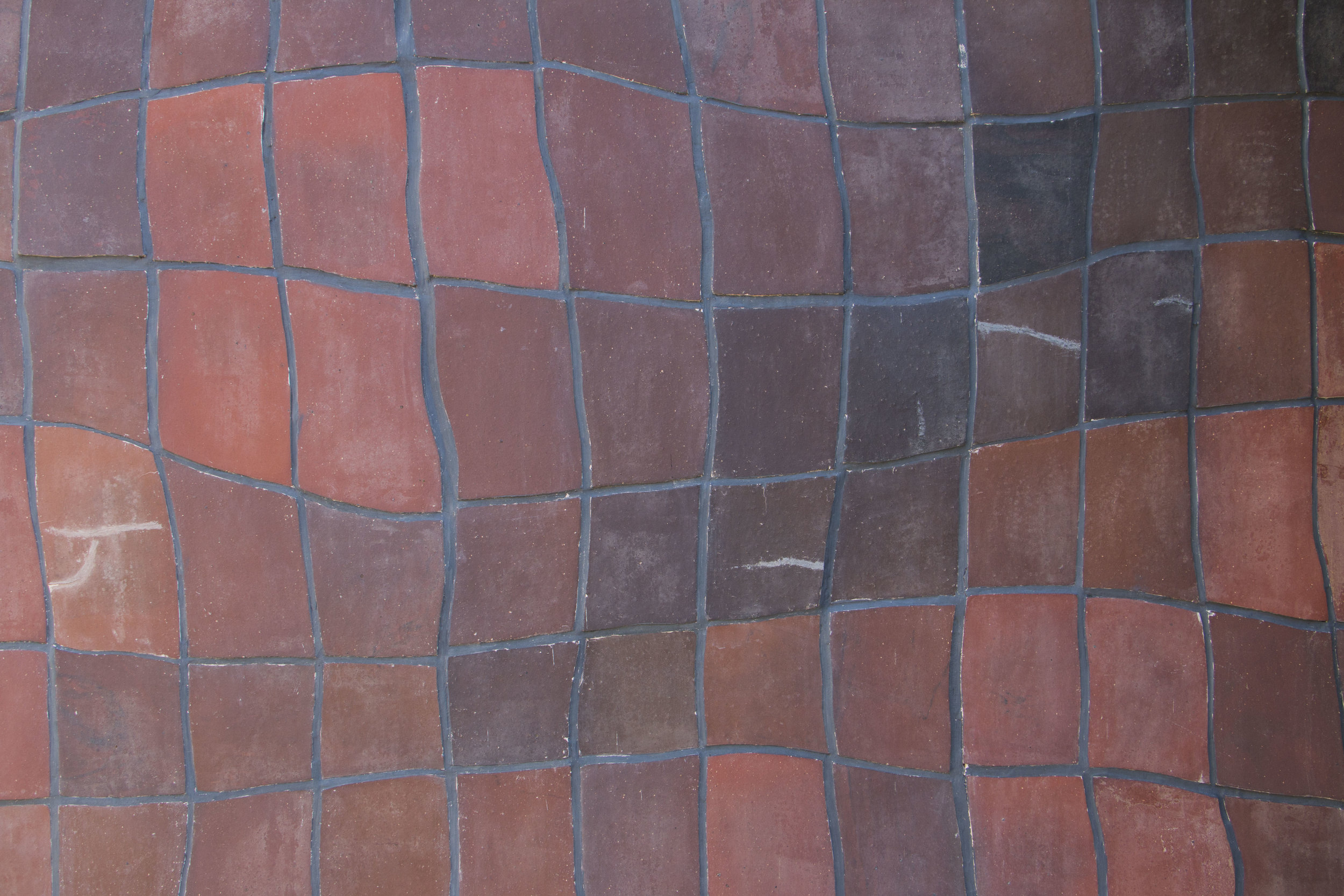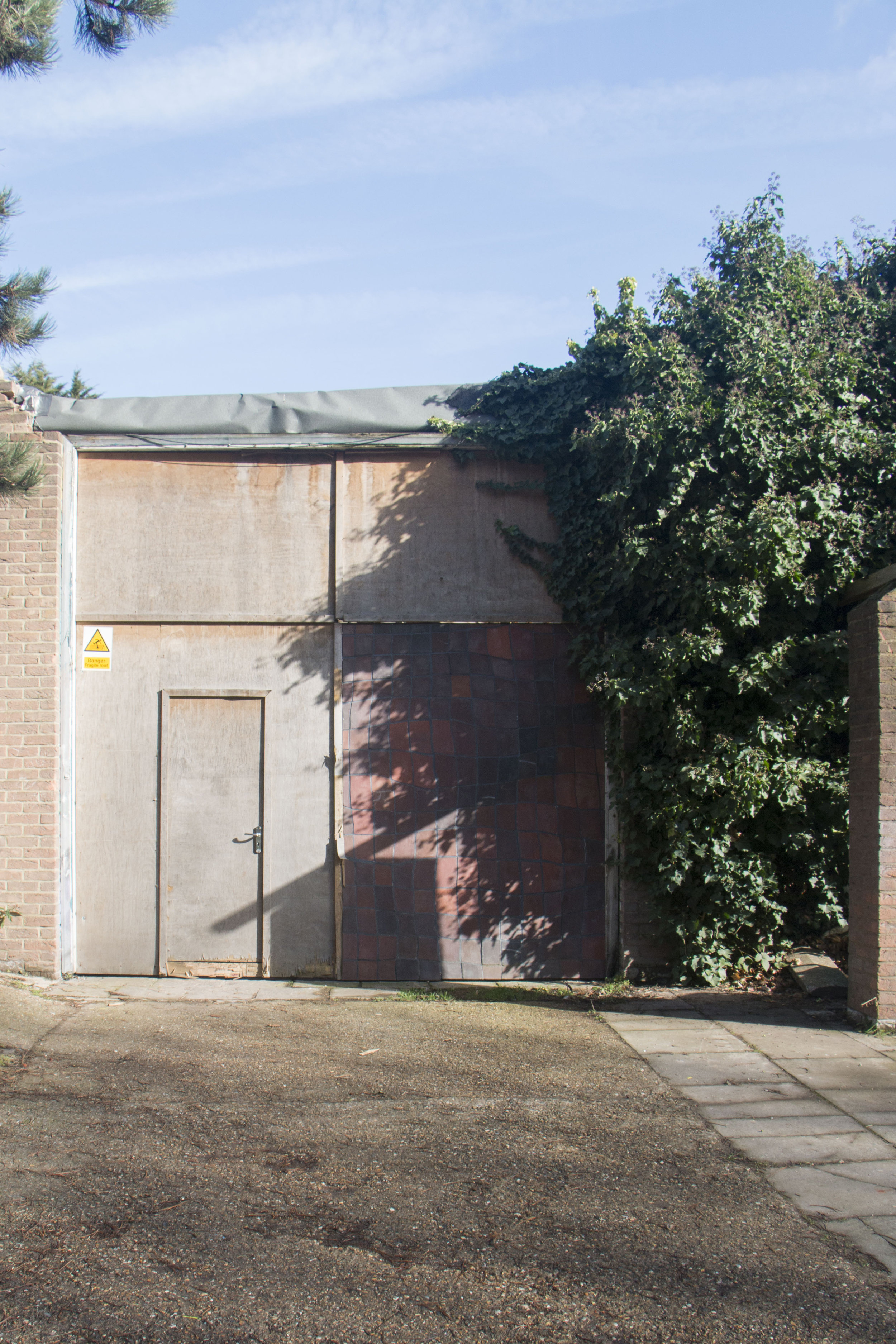
Sculpture garden
Our garden is a crucial aspect of the story of the square and we want to use it as a platform for artists and designers to develop their own practice, creating a recreational place for installations and sculptures.
Open Studio 2024 Sculpture Garden
For the Summer '24 Open Studio Day, Rochester Square presented its newest Sculpture Garden display. Curated by Francesca Anfossi and with the assistance from Ella Ciarns, the Rochester Square Garden was transformed into an open-space gallery showcasing over twenty ceramic pieces by the Studio's permanent and Project Members. The artworks could seen be around all areas of the garden, from the firepit to the chicken coop forming an enchanting trail of discovery.
Weeds by Tue Greenfort, 2019-2021
In 2019, Tue Greenfort was invited to create a site-specific work in response to Rochester Square's site and clay production facilities. The project was inspired by the process of eradicating Japanese Knotweed from the square. Japanese Knotweed - a highly invasive species that has been dubbed Britains' most destructive plant due to the threat its roots pose to buildings' foundations - was introduced to the UK in the middle of the 19th Century, at the height of Britain's naval and imperial power.
Fascinated by this narrative, Greenfort researched various specimens of invasive plants present in the square's garden area. Using these herbal findings, the artist created five large hexagonal reliefs in glazed ceramic.
The resulting works were brought back to the garden in Spring 2021 and installed close to the plants creating an ultimately celebration of the resilient powers that weeds symbolically exert on human hegemonic tendencies.
The project was commissioned by South into North in collaboration with Rochester Square and realised with the support of the Danish Arts Foundation.
A THIRD MAP by Ryan Orme and Kazuki Nishinga, 2019
After his residency at Rochester Square with Slade University, Ryan Orme worked in a collaborative site specific exhibition with Kazuki Nishinga exploring the idea of logic frameworks.
Through the process of collaboration, the artists seek to produce work that can extend beyond the limits of an individual imagination and inhabit its own creative logic. The project plays with the Japanese notion of ‘Kekkai’ ; a boundary that encloses a space marking it as special - a place that exists outside of the normal frame. As well as being a playful exploration of material, the projects looks at the imagination and the way in which our internal frameworks provide us with a means of accessing the world, but also exist as a limitation.
The work was installed in our garden and open to the public during September and October of 2019. After the exhibition RS kept some of the pieces and are still installed in our garden.
Green sculpture by Jake Fisk, 2019
A metaphorical and physical multifunctional area, part sculpture part classroom part work bench part seating part recreational space designed by Jake Fisk during his residency with Slade University. The sculpture has a living carpet for anyone engaging with the space to be in contact with nature. The foliage creeps around the structure swallowing it and enhancing it. A rendering covering the construction has been inspired by the textures, colours and qualities of the site and clay that he had been working with. The raised garden area will become the location of communal workshops, meals, flower pressing, drawing, clay building and education.
Pizza Oven by MA Architecture students of Westminster, 2019
We collaborated with the Architecture MA students from University of Westminster and a local architectural firm Piercy & co. Understanding and learning through making, students were using the site as a platform for exploring rituals of eating and drinking.
Shifting, tiles by Gerald Mak, 2019
Our former technician and studio member Gerald Mak, designed a site specific project made for the entrance of Rochester Square. The piece is composed of 204 bespoke tiles with a variety of natural tones achieved by mixing different ratios of terracotta, black clay and London clay. He used clay excavated on site mixed with different percentage of oxide to create a relationship between the original London bricks building present in Rochester Square.










